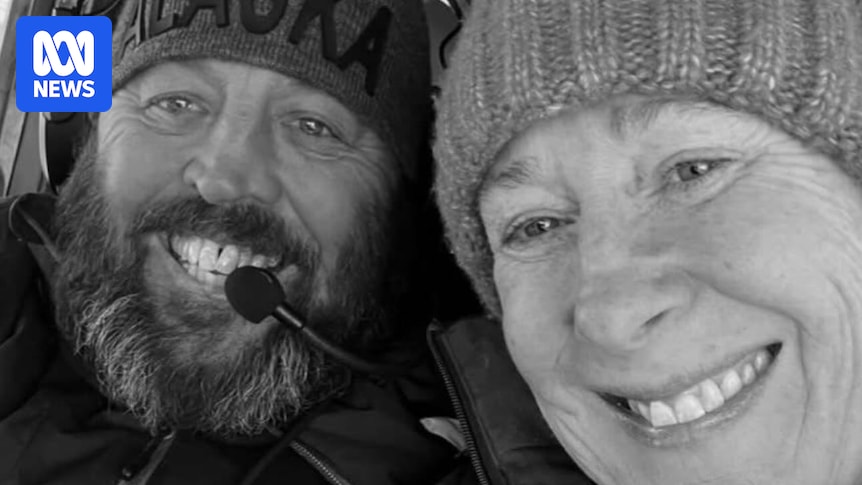Friends and neighbours of three people killed in a plane crash at Shellharbour Airport in New South Wales say their deaths are a “big loss to the community”.
Andrew and Julianne Connors and Colin McLaughlin died after their plane crashed shortly after take-off about 10am on Saturday.
Witnesses told police the plane, which was intended to fly to Bathurst, had left the tarmac and risen about 30 metres into the air before the left wing appeared to dip and hit the tarmac.
Three people died in a plane crash at Shellharbour Airport in NSW on Saturday. (ABC News)
It caught on fire after hitting the ground, killing all three people on board.
Mark Taylor from Avondale said the deaths were “hard to fathom”.
“All three were absolutely fantastic people,” he said.
Mark Taylor says Andrew and Julianne Connors loved flying. (ABC Illawarra: Romy Gilbert)
Mr Taylor said Andrew and Julianne had been neighbours and friends for many years, and had “loved flying”.
“[They] flew whenever they got the chance,” he said.
“[Their deaths are] very tragic, a big loss to the community, big loss to many.”
Eric Stead had lived near Colin McLaughlin for about three decades and said he would be missed by many in the area.
Eric Stead says Colin McLaughlin was the type of person to always help someone else out. (ABC Illawarra: Romy Gilbert)
“We used to ride together, do a lot of things together, go out for tea together,” Mr Stead said.
“If you go out to tea, he’d be the first one to put his hand [in his] pocket and shout, first one to do anything for you.”
Mr Stead said he believed the trio had planned to fly to Bathurst, in central west NSW, to watch the Bathurst 1000 race.
“I knew he [Colin] loved Bathurst,” he said.
“He probably thought, ‘How great is this going to be, flying up to Bathurst, having a few beers, watching the Bathurst [1000] and then coming back home by plane instead of driving’.”
Flowers have been left at the airport.
(ABC Illawarra: Romy Gilbert)
‘Catastrophic’ incident under investigation
Australian Transport and Safety Bureau (ATSB) investigators arrived at the crash site on Saturday morning to begin a preliminary assessment of what went wrong.
ATSB Chief Commissioner Angus Mitchell said investigators spent much of Sunday analysing the tarmac, what was left of the aircraft, video footage and gathering witness statements.
He said several factors needed in-depth analysis before any “speculation” could be made on what may have occurred.
“But what we do know and all indicators are that there wasn’t any power being produced in the very final moment as it’s impacted with terrain, and what we don’t understand is why,” he said.
“There’s a lot for us to go through before we can start speculating why that was the case.”
He said four investigators will remain at the airport to inspect the remains of the engine.
“The continuity of flight control, we look at fuelling issues, we look at anything else that may have impacted the pilot’s decision making.
“Particularly starting to get some of the maintenance history of the aircraft itself, some of the pilot’s history. There’s a lot for us to gather before we start to think about what may have gone wrong.”
Mr Mitchell said environmental factors would also form part of the investigation.
“We do know what the wind was, whether or not it played a role is something we’ll need to determine, but certainly very early analysis is the wind was pretty standard,” he said.
Mr Mitchell said it was a “catastrophic” incident.
“We do know it only got to about 80 to 100 feet at most, it was only in the air for a couple of seconds before it has sharply banked to the left and impacted the ground,” he said.
“So certainly something quite catastrophic has gone wrong in those final moments, what it was and what led to it is what we need to determine over the course of the next few days and indeed the next few weeks before we put out a preliminary report in about two months’ time.”
The ATSB has started seven new investigations in the past two weeks, four of which have involved fatal aircraft crashes.
Mr Mitchell said the incidents would have far-reaching consequences.
“The whole industry feels this particularly when you get into rural aviation and light planes; it’s a very close-knit community.”

